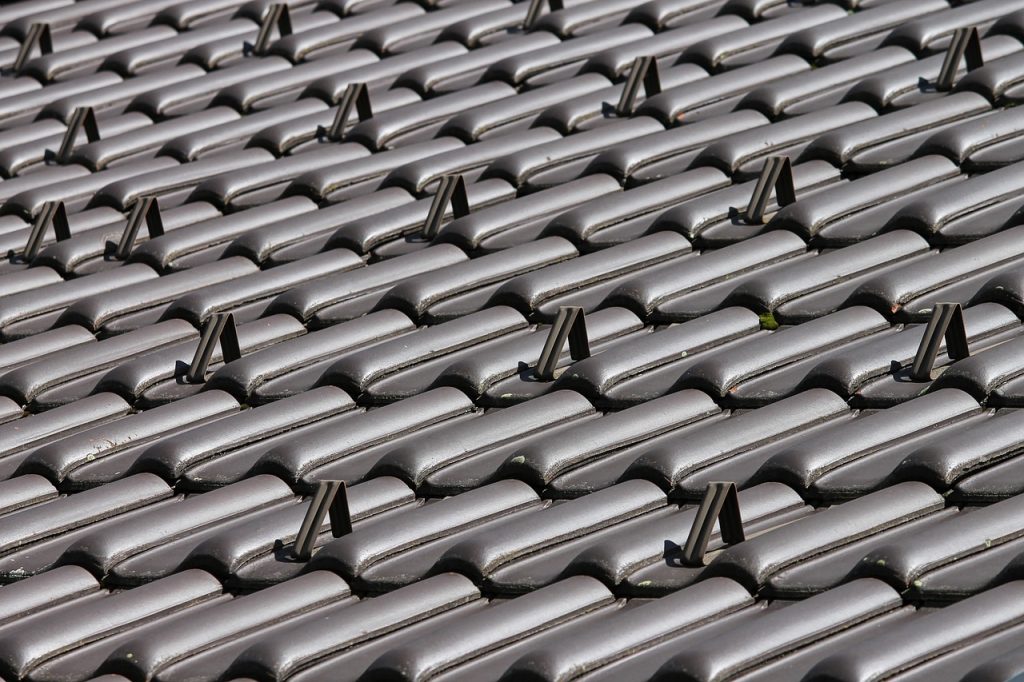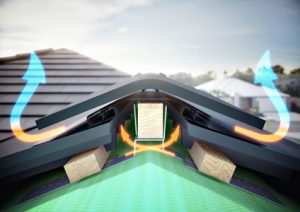

In a land of extreme weather like Australia, choosing the right roof ventilation system is essential to keeping a house comfortable, energy-efficient, and free from the risks of mould and moisture damage. It’s common sense for those in the industry… but even for those in the know, it can be overwhelming trying to sort through all of the ventilation options available.
In this guide, we will be diving into what we consider the best ventilation options on the Australian market, from powered to passive so that you can make a confident decision.
Powered Roof Ventilation
In Australia, the two most popular forms of powered roof ventilation systems are solar-powered and mains-powered. Depending on the budget and requirements of your project, either one or both may fit your needs.
Solar Roof Ventilation
In our opinion, solar roof ventilation fans are the king of the powered ventilation category for quite a few reasons.
- Airflow: They move thousands of cubic metres of air per hour, which means that an average Aussie home would only need one and a large home would need two. If you compared that to whirlybirds, you’d need around 15 to do the same job.
- Cooling Costs: As you know, anything solar is basically free to operate from the time you install it other than minor maintenance here and there. This means you can drastically improve the air quality of a home without adding to its energy bill.
- Sleek Design: For many, a house with 10+ whirlybirds poking out of the roof is an eyesore. With solar-powered ventilation, you can reduce the number to one or two, and greatly improve the aesthetics of the property.
- Product Cost: One of the major drawbacks of solar is the cost of the product and installation. For most homes, you will need two solar ventilators at $500 – $1000 each. That is not including the installation cost either, which will be $200 – $500 per ventilator. While you won’t need to have 10 of them like you would a whirlybird, it will still take you around 10 – 15 years for the energy savings of these devices to pay for themselves.
- The ‘Sunlight Dilemma’: As you know, solar roof ventilation only works when the sun is out, which is a significant disadvantage in winter months where sunlight is in shorter supply but moisture still needs to be removed from the roof space.
- Maintenance: One of the major drawbacks fo any powered ventilation system is that they do require more maintenance than their passive alternatives. Things break over time, and they can be costly to repair when they do.
Main-Powered Roof Ventilation
Coming in second to the leader in the category, main-powered roof ventilation is a far better option than a passive cooling system like a whirlybird for many reasons.
- Airflow: In terms of function, the performance of solar and main powered roof ventilators are essentially equal. This means only one or two of either would be more than enough for 90% of Australian houses. The main advantage is that main-powered roof ventilation can run at night as well.
- Cooling Costs: One of the main drawbacks of main-powered roof ventilation is that in addition to the setup cost and maintenance costs, you also have to pay for the extra electricity you are drawing from the power grid. While it won’t be a huge outlay, the costs do add up over time.
- Sleek Design: Again, much like with the solar-powered alternative, main-powered roof ventilation can help to maintain the aesthetics of a property by not overwhelming the roof space with bulky fans poking out of the roof.
- Product Cost: Now that solar technology has drastically reduced in cost, the price difference between main-powered roof ventilation and solar-powered roof ventilation is actually quite small. For many, this makes the solar option the clear winner.
- Maintenance: One of the major drawbacks fo any powered ventilation system is that they do require more maintenance than their passive alternatives. Things break over time, and they can be costly to repair when they do.
Passive Roof Ventilation
Whirlybirds
In Australia, whirlybirds are one of the most popular roof ventilation systems. What is strange, though, is that they underperform almost every roof ventilation alternative on the market today. There are many good reasons why this is the case too:
- Unpredictable Performance: While powering your cooling using the wind means you won’t pay energy bills, it also means that on days with no wind, you will have no cooling.
- High Installation Cost: Another major disadvantage is that the average size house will need around 10 – 15 whirlybirds to be effective. At $200 – $500 each, whirlybirds are far more costly and far less efficient than other alternatives
- Low Operating Cost: One of the only positives of whirlybirds is that they are free to run once they are installed and are incredibly low maintenance.
- Easy Installation: While the upfront cost of the whirlybirds themselves is very high, they are actually very easy to install as you don’t have to play with any electrical components, wire routing, etc.
RapidRidge

For those still interested in a passive roof ventilation solution, RapidRidge is a great alternative to whirlybirds and other options. In essence, it is a dry fixed above-sheathing ventilation system that adds vents between the roof tiles, effectively turning the entire roof into a giant air vent. The major benefits are:
- Performance: As you can imagine, having the entire roof as a vent, versus just a few vents here and there makes a huge difference to the passive ventilation performance of RapidRidge. Overall, we attribute anywhere from 5% to 35% reduced energy bills with RapidRidge.
- Fast To Install: RapidRidge can be installed in most instances by a roofer in less than a day and is suitable for retrofit installations.
- No Maintenance: Since RapidRidge has no moving parts or electrical components, it is a set-and-forget passive roof ventilation system that requires no maintenance.
- Affordable: At $18 ex. GST per linear meter, RapidRidge is a passive roof ventilation solution that is affordable to purchase and install on any new roofing project. It’s also maintenance-free, which saves you more.
- Improved Aesthetics: Compared to whirlybirds and other powered cooling solutions, RapidRidge maintains the visual aesthetics of the roof, keeping it sleek and minimal without penetrations.
Discover The Potential of RapidRidge
RapidRidge is an award-winning, energy-efficient roof ventilation system that can reduce the electricity usage and thus, carbon footprint, of all Australians. Want to learn more? Visit our website.
